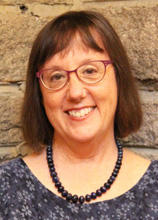The benefits
The “language of public agreement”—versus the language of rules and policies, as articulated by Robert Kegan and Lisa Laskow Lahey in their work on using language for transformation—provides an outlet for students to understand the needs of their peers as learners and practice accountability within a community. “It mitigates irrelevant noise in the classroom that undermines engagement and impedes learning.”
The challenges
The discussion is a high trust exercise, which is why Click waits until the third session of the semester when students are a bit more familiar with one another. The agreed upon norms are useful as discussion rules, but Click makes the extra effort to ensure that they add value to the learning experience, for example by making connections to leadership topics addressed in the course.
Takeaways and best practices
-
Students ownership is critical.
Click suggests possible agreement topics such as the use of electronic devices, confidentiality, and class preparation, but “the most motivated learner is the one who owns their own process for learning.” She finds that students produce the agreement in a way that she would not have thought to do. “Students have an incredibly high competency level, and I facilitate their use of that competency.”
-
Agreement requires regular reinforcement.
At the recent suggestion of a HDS 2925 Administration and Leadership student, Click now dedicates a portion of each class to check in about the agreement, lifting the burden from those who might be unsure how to raise concerns. She consistently emphasizes to students that citing violations is not a disruption to the learning process: “That’s where it becomes most valuable—when someone has the courage to name that reality.”
-
Instructor’s role as community member.
Click does not hesitate to take ownership of her own flubs (for example, when she broke a promise to read student journal entries promptly). She brought her error to the class’s attention for discussion and accepted the agreed upon consequences, demonstrating that she is not above the community norms herself.
Bottom line
A successful learning environment can be mended in situations where instructors and learners do harm: “It happens. It’s important to have a process to address that as a community and it’s all about care—about the course subject, each other, and ourselves. When this is gone, learning decreases because of the static and the noise.”
 Emily Click, Assistant Dean for Ministry Studies, Director of Field Education, and Lecturer on Ministry Studies, facilitates a discussion with students early in the semester to agree upon norms for classroom engagement, including how to address any divergent behavior. Students prepare for the conversation by writing a journal reflection that illustrates what is most important to them and what helps them thrive as a learner.
Emily Click, Assistant Dean for Ministry Studies, Director of Field Education, and Lecturer on Ministry Studies, facilitates a discussion with students early in the semester to agree upon norms for classroom engagement, including how to address any divergent behavior. Students prepare for the conversation by writing a journal reflection that illustrates what is most important to them and what helps them thrive as a learner.
